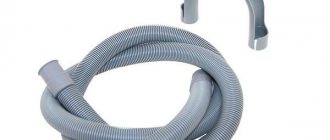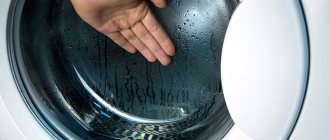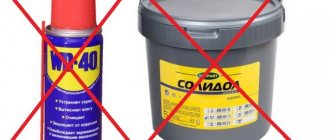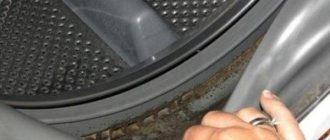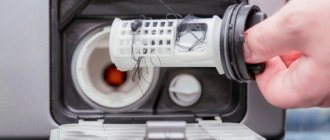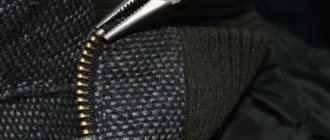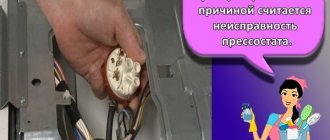It happens that immediately after purchasing or moving it is discovered that the drain hose of the washing machine has broken, is leaking or does not reach the sewer. Needs repair, replacement or extension. Let's figure out how to do this at home with your own hands.
The manual is relevant for the following models of washing machines: Ardo / Ardo, Beko / Beko / Veko, Bosch Avantixx, Classixx, Logixx, Maxx, SportLine / Bosch Avantix, Classic / Classic, Logix, Max, Sportline; Brandt / Brandt, Candy Aquamatic, Holiday, CNE, CTS / Candy Aquamatic, Holiday; Daewoo / Daewoo, DEXP / Dexp, Electrolux Time Manager / Electrolux, excuse me, Timemanager, Evgo / Evgo, Gorenje / Gorenje, Haier / Hayer, Hansa / Hansa, Hotpoint Ariston Margherita, RSM, ARSL, ARWM / Hotpoint Ariston Margherita, Indesit IWSB , WISL, WISN, WITL, Innex / Indesit Wisl, Inex; LG / LJ/LV; Miele / Miele, Samsung Diamond, WF, EcoBubble, Bio Compact / Samsung Diamond, Eco Bubble, Bio Compact; Siemens / Siemens, Vestel / Vestel, Whirlpool AWG / Whirlpool, Zanussi Aquacycle, EcoValve / Zanussi Aquacycle, EcoValve; Atlant, Vyatka, Desna, Donbass, Malyutka-2, Saturn, Siberia, Fairy-2, Eureka-3 and other brands with vertical and horizontal loading, automatic and semi-automatic.
To start
Remember two main rules that must be followed before any repair work on household appliances.
Shut off the water
Close the water supply shut-off valves. They are usually located behind the washing machine on pipes. Now, even if the hose is damaged during operation, water will not flow.
De-energize
Remove the plug from the socket. To keep the wire out of the way, you can attach it with paper tape or wire to the back wall of the washing machine.
Preparing tools and materials
Before you begin repairing, replacing, or extending the drain hose, make sure you have everything you need on hand:
- pliers;
- screwdrivers;
- fastenings - metal clamp, coupling or adapter;
- sealant, we recommend using silicone;
- water for washing and cleaning;
- brush or cable;
- the spare parts themselves.
Extending the water inlet hose
Don't know how to extend the inlet hose? Everything is extremely simple: instead of extending the water supply hose, buy a longer part. It is sold in the same place where parts for the drain system are sold. To change a part, disassembling the SMA is not necessary. Proceed like this:
- Disconnect the SM from the water supply if it was connected to it.
- Unscrew the fasteners (manually, without tools, so as not to damage the plastic fasteners).
- Install a new part. When tightening the fasteners, do not use tools - do everything by hand.
- Open the valve and check the tightness of all connections.
- If everything is fine, start washing. At least for the test one.
If you haven’t found a hose of a suitable length, you can lengthen it. Usually the water supply hose is extended by a second similar element, but you will need an adapter. Use a 3" x 4" brass nipple. To extend the hose for supplying water to the washing machine, simply screw the nipple onto each hose, and that’s it - the job is done successfully.
Step-by-step instruction
Most often, the length of the drain hose reaches about two meters. But on average it is 1.5 m. If your machine is installed in such a way that the standard size is not enough, you can increase the tube or buy another one in a specialized store.
Lengthen standard
The easiest way to extend a drain hose is to attach another one to the existing one. For example, from an old typewriter. Or buy a new one. Moreover, there are at least two ways to lengthen it.
For the first you will need a special plastic adapter (coupling):
- Place the ends of the parts onto the connector.
- Tighten the clamps on both sides.
- Run a test wash.
- If water leaks at the connection, tighten the clamps more tightly and apply silicone sealant.
For the second method, you need a piece of plastic or rubber tube with a diameter slightly smaller than the diameter of the hoses. Their ends must be put on this improvised extension cord and aligned. The connection must be tight. Place the clamps on top and tighten tightly. Run the wash and check the tightness.
Put a new one
If you are not sure that the extended hose will be leak-proof and will last a long time, it is better to buy a new one of the right size.
To replace it, you will have to disassemble the body of the washing machine.
A drain tube is attached to the pump to drain dirty water. This is where you need to get.
Universal instructions for disassembling washing machines: 23 videos for all brands
Depending on the brand of the washing machine, the pump can be located anywhere: bottom, side, back. Therefore, before repair work, carefully read the universal instructions located above.
First of all, use a screwdriver to unscrew all the fasteners and open access to the pump. If it is uncomfortable to work with, place the machine on its side. Make sure that the electronic control module is at the top.
Further:
- If there is any remaining water in the drain tube, drain it. You can put a rag or a basin under the pump.
- Remove the fasteners from the part of the siphon to which the pipe is connected.
- If a check valve is installed on the drain, unscrew it.
- Use a flathead screwdriver to loosen the bolts on the pump and pipes.
- Remove the drain pump.
- Use pliers to loosen the clamp and disconnect the hose.
- Carefully remove it.
- Attach the new tube to the pump.
- Replace the pump.
- Connect the drainage tube to the drain (sewer, siphon or check valve).
- Reattach the external/internal bolts, fasteners and clamps.
Easy to attach to water supply
Typically, installing a washing machine requires a water supply at a distance close to it. The water supply network is laid using metal or plastic pipes with a diameter of 15 mm.
There are three main ways to install equipment in a water supply system:
- Use of metal or plastic pipes and couplings.
- Using cranes.
- Using a fitting for pipes made of metal-plastic.
In the first case, a crimp coupling is required, which consists of two halves tightened with four screws. The faucet is screwed on when there is a rubber gasket just under the side where the hole is. After a convenient arrangement for connecting the coupling, it is determined that it is necessary to connect the machine inlet to the pipe using a crimp sleeve, which should compress the cold water pipe.
The technology for installing couplings involves the following actions when blocking the flow of cold water into the apartment:
- Preliminary cleaning of pipes from dirt with cold water.
- Tight, full clamping of the four clutch screws.
- Drill a hole in the pipe through the coupling using an electric drill with a diameter of 8-10 mm.
- Screw the ball valve into the coupling to seal the tap thread.
Recommendations and tips
Before repairing, extending or replacing the hose, use a tape measure to measure the distance from the pump to the drain. And add 5 to 10 centimeters to the result. The drainage tube should not be stretched.
Where is
- Brands Ariston, Samsung, Indesit, Ardo, LG.
Location at the bottom of the unit. To gain free access, you need to tilt the machine, then unscrew the bolts on the cover and drain filter.
- Zanussi and Elektrolux.
To access the hose in these brands, you need to open the panel by unscrewing the screws that hold the top cover. It also needs to be removed along with the back of the case.
- Beko top loading washing machines.
In models of this brand, the pump is located on the side panel. For repair work, you need to unscrew and remove the metal cover.
Standard sizes and diameters
Hoses can be regular, 1-5m long, or corrugated (telescopic). When compressed they are only 60 cm, and when extended they are 2 m.
According to experts who carry out repair work on household appliances, it is not recommended to install hoses in washing machines whose maximum length exceeds 3.5 m. The power of the drain pump is designed for a certain distance leading to the sewer pipe. If it is too large, then the pump is overloaded. Accordingly, the part quickly fails. And electricity is not used economically.
Rubber tips - fittings - are installed at the ends of the drain tube. The outer size of the fitting is the working diameter. Most manufacturers make a diameter of 19 or 22 mm at both ends. Sometimes one end may be 22mm and the other 19mm. In some modern models, the diameter of the nozzle for connecting to the pump reaches 29 mm. For example, LG.
When replacement is required
You will have to buy a new hose if:
- The old one is worn out and leaking.
- It bent and broke.
- It is clogged to such an extent that simply cleaning it is no longer an option. This happens with the gradual accumulation of limescale or soap deposits, grease, hair, threads, etc.
Methods for organizing drainage
The main rule is that the end of the drain tube should be located at a height of 50 cm from the floor. If it is lower, then you can get a “siphon effect”: water from the sewer will return to the drum. If it is higher, the pump will start to wear out and waste electricity.
So, three options for the location of the drain.
- The end of the hose can be attached to a sink, bathtub or toilet using a special hook. The method is simple, but not very convenient.
- Connection to a siphon if the washing machine is located near the washbasin.
- Connection directly to the sewer pipe.
Step-by-step instructions for connecting any washing machine
Technical features
Before extending the hose, you must understand its parameters. Remember: in no case should you raise it higher than 1 meter so that the drainage pump can normally pump waste water out of the tank. If you neglect this recommendation, the low power of the pump will not be enough to drain, and water will linger in the tank.
During connection, you must take care to keep the tube tension free, especially paying attention to the top point. It should be 60 cm higher than the lowest point. This is typical for all machines, regardless of brand and model. But still, if you have everything calculated down to the centimeter, you need additional information. To find out the exact value, look at the user manual - everything is spelled out there. If nothing is indicated in the manual, look for other technical documentation for the SM.
Materials used
To extend the drain system, you will need the following materials:
- Extension tube.
- Clamps.
- Screwdriver Set.
- Connecting elements.
The extension tube can be purchased at a hardware store. There it will not be difficult to find both types of drain hoses described earlier.
Connecting elements for joining old and new tubes. This part is a plastic pipe, to the ends of which it is necessary to attach elements of the drain system.
Using clamps, the edges of the drain system are attached to the connecting element. It is worth noting that one drain tube may have ends of different diameters. Most often, the thin end is attached to the machine, and the thick end to the extension component. This must be taken into account when purchasing clamps.
Prevention measures
Usually, a clogged washing machine hose occurs on its own. Small objects cannot get into it, as they will get stuck in the pump or drain filter.
This can be avoided by following these rules:
- Wash items using a special bag;
- Use water softeners;
- Regularly descale the machine;
- Wash only using powder - automatic;
- Before washing, turn clothing pockets inside out and remove all foreign objects from them.
Partial protection against leaks
To protect against leaks, a special tray with a built-in float can also be used. When water enters the pan located under the washing unit, the float rises and closes the switch contacts. A signal is sent to the control unit, the washing process is interrupted, and the pump begins to pump out water.
Helpful information
If understanding how to extend the drain hose of a washing machine or replace it does not cause any difficulties, then connecting to a siphon and sewer system raises some questions. The main one is the elimination of the siphon effect. To ensure that the machine operates correctly and that sewer gases and water do not penetrate into the unit system, it is necessary to:
- pay attention to the fact that the hose for draining water after exiting the unit is secured to its back side using a ring or hook;
- check that the drain pipe is at least half a meter above the floor level, regardless of whether the connection to the sewer is made directly or is attached to the edge of the bathtub or sink;
- install a check valve by connecting the washing machine drain to the sewer system. Most often, a check valve is used when connecting to a sewer line directly; visually check that during operation of the unit there are no leaks in the tubes, cuffs, connectors and adapters.
There is an opinion that by bending the drainage pipe in the shape of the English letter S and fastening it in this form, you can refuse to install a siphon with a check valve. This statement is not entirely true. This action creates only one more water seal, which, in principle, does not affect anything. Installing a check valve is still the most reliable way to combat the siphon effect. In this case, the height of the tie-in into the sewer does not matter.
Varieties
Before you begin lengthening, you need to familiarize yourself with the main types of hoses.
Jellied
The inlet hose is a device used to connect the washing machine to the water supply system. It is with its help that water is supplied to the internal elements of the system. Such products operate under high pressure conditions and therefore reinforcement technology is used in their manufacture.
The connecting components of the structure can be made of steel, aluminum or plastic. Budget models use plastic fittings that are unscrewed and screwed on manually, without the use of additional tools. When working with steel or aluminum products, you will have to use a special wrench.
Drain
A drain hose is used to drain liquid from washing equipment. The following types of drain tubes are distinguished:
- Standard. Such products are produced in a certain length, the length of which can reach five meters.
- Telescopic. These are corrugated products that can easily be stretched to the desired length. When connecting telescopic tubes, you must be very careful so that they do not bend. The kinks may burst under strong pressure.
- Polypropylene. They are made from durable polypropylene. At each end of the product there are special fittings with which a device for washing clothes is connected.
Instructions on how to properly cover a door with self-adhesive film
